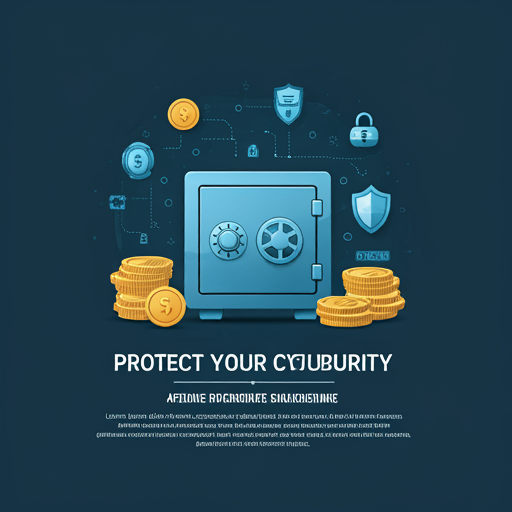Introduction to Cybersecurity in Finance
The Importance of Cybersecurity
In today’s digital landscape, cybersecurity is paramount in finance. Financial institutions face constant threats from cybercriminals seeking sensitive data. Protecting assets is not just a necessity; it’s a responsibility . Security breaches can lead to significant financial losses. This is a serious issue. Implementing robust cybersecurity measures safeguards both institutions and clients. Everyone deserves protection. Investing in cybersecurity is investing in trust. Trust is essential in finance.
Overview of Financial Cyber Threats
Financial institutilns encounter various cyber threats daily. These threats include phishing, ransomware, and data breaches. Each type poses unique risks to sensitive information. Awareness is crucial for prevention. Cybercriminals often exploit human error. This is a common tactic. Additionally, the rise of sophisticated malware complicates defenses. Security measures must evolve continuously. Staying informed is essential for protection.
Understanding Cryptocurrency Security
How Cryptocurrencies Work
Cryptocurrencies operate on blockchain technology, which ensures transparency and security. Each transaction is recorded in a decentralized ledger. This prevents tampering and fraud. Users must secure their private keys. Losing a key means losing access. Additionally, cryptocurrencies utilize cryptographic techniques for security. These methods protect user identities and transaction details. Security is paramount in this space.
Common Vulnerabilities in Cryptocurrency
Cryptocurrencies face several common vulnerabilities that can jeopardize security. These include phishing attacks, where users are tricked into revealing private information. This is a frequent issue. Additionally, software bugs can lead to exploits. Regular updates are essential for protection. Furthermore, inadequate wallet security can result in theft. Users must choose wallets wisely. Awareness is key to safeguarding assets.
Types of Cyber Threats in Finance
Phishing Attacks
Phishing attacks are prevalent in the financial sector. Cybercriminals often impersonate legitimate entities to deceive users. This tactic is highly effective. Victims may unknowingly provide sensitive information. Awareness and education are crucial for prevention. Users should verify sources before sharing data. Trust your instincts; they matter.
Ransomware and Malware
Ransomware and malware pose significant threats to financial institutions. These malicious programs can encrypt data, demanding payment for access. This tactic can cripple operations. Additionally, malware can steal sensitive information without detection. Regular security updates are essential for defense. Users must remain vigilant against suspicious activities. Awareness is the first line of defense.
Best Practices for Safeguarding Assets
Using Strong Passwords and Two-Factor Authentication
Using strong passwords is essential for security. Weak passwords can be easily compromised. He should create unique passwords for each account. This practice minimizes risk significantly. Additionally, two-factor authentication adds an extra layer of protection. It requires a second verification step. This method greatly enhances account security. Awareness is crucial for safeguarding assets.
Regular Software Updates and Security Patches
Regular software updates are critical for maintaining security. They address vulnerabilities that cybercriminals exploit. He should prioritize timely installations of updates. This practice significantly reduces risks. Additionally, security patches fix known issues in software. Ignoring them can take to breaches. Staying informed about updates is essential. Knowledge is power in cybersecurity.
Secure Storage Solutions for Cryptocurrency
Hot Wallets vs. Cold Wallets
Hot wallets are connected to the internet, providing easy access for transactions. This convenience comes with increased security risks. Users can quickly send and receive funds. However, they are more vulnerable to hacks. Cold wallets, in contrast, are offline storage solutions. They offer enhanced security against cyber threats. This method is safer for long-term holdings. Security is paramount in cryptocurrency.
Hardware Wallets: Pros and Cons
Hardware wallets provide robust security for cryptocurrency stlrage. They protect private keys from online threats. This method is highly effective against hacks. However, they can be less convenient for frequent transactions. Users must connect the device to access funds. This process can be cumbersome. Security is worth the effort.
Regulatory Framework and Compliance
Understanding Financial Regulations
Financial regulations ensure market integrity and protect investors. Compliance with these regulations is essential for firms. Non-compliance can lead to severe penalties. He must understand the regulatory landscape. This knowledge helps mitigate risks effectively. Regulations vary by jurisdiction and sector. Awareness is crucial for informed decision-making. Knowledge is power in finance.
Compliance Best Practices for Cryptocurrency Businesses
Cryptocurrency businesses must implement robust compliance measures. These practices include Know Your Customer (KYC) protocols. KYC helps verify user identities effectively. Additionally, Anti-Money Laundering (AML) policies are essential. They prevent illicit activities within the platform. Regular audits ensure adherence to regulations. Compliance is vital for operational integrity. Awareness is key to success.
The Role of Blockchain in Cybersecurity
How Blockchain Enhances Security
Blockchain enhances security through decentralization and transparency. Each transaction is recorded on a public ledger. This makes tampering nearly impossible. Additionally, cryptographic techniques protect data integrity. Users can trust the system more. This technology reduces the risk of fraud. Security is essential in finance.
Challenges and Limitations of Blockchain Security
Blockchain certificate faces several challenges and limitations. Scalability issues can hinder transaction speed and efficiency. This can affect user experience negatively. Additionally, smart contract vulnerabilities may expose systems to risks. He must ensure thorough testing before deployment. Furthermore, regulatory uncertainties can complicate adoption. Awareness of these challenges is crucial.
Future Trends in Cybersecurity for Finance
Emerging Technologies and Their Impact
Emerging technologies are reshaping the cybersecurity landscape in finance. Artificial intelligence enhances threat detection and response capabilities. This leads to faster mitigation of risks. Additionally, blockchain technology improves data integrity and transparency. These advancements create a more secure environment. However, they also introduce new vulnerabilities. Awareness of these trends is essential for protection.
Preparing for Future Cyber Threats
Preparing for future cyber threats requires proactive strategies. Organizations must conduct regular risk assessments to identify vulnerabilities. This helps prioritize security measures effectively. Additionally, investing in employee training enhances awareness of potential threats. Knowledge is crucial for prevention. Implementing advanced technologies, such as AI, can improve threat detection. Staying informed about emerging trends is essential.
